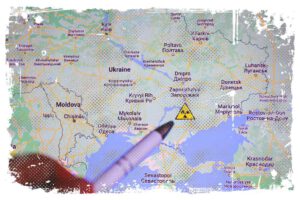Artillery is one of main category in every army. It is usually equipped with heavy guns, howitzers, mortars, and rocket launchers. Its role is to engage ground, air, and naval targets with fire and rockets. Artillery usually supports other types of troops but often operates independently in carrying out its duties. The supporting equipment that allows it to carry out its fire tasks effectively are most often fire control systems, reconnaissance and inteligence systems (including radars).

Artillery Structure in Poland
The Polish Armed Forces have three regiments of artillery at the division level, eleven self-propelled artillery divisions at the general-military brigade level, and a specialized training center for artillerymen.
| The 5th Lubuski Regiment of Artillery | The 11th Mazurian Artillery Regiment | The 23rd Silesian Artillery Regiment |
|---|---|---|
| Command Squadron | Command Squadron | Command Squadron |
| 1st Self-propelled Artillery Squadron | 1st Self-propelled Artillery Squadron | 1st Self-propelled Artillery Squadron |
| 2nd Self-propelled Artillery Squadron | 2nd Self-propelled Artillery Squadron | 2nd Rocket Artillery Squadron |
| 3rd Rocket Artillery Squadron | 3rd Rocket Artillery Squadron | 3rd Rocket Artillery Squadron |
| 4th Rocket Artillery Squadron | 4th Rocket Artillery Squadron | 4th Rocket Artillery Squadron |
| Logistics Battalion | Logistics Battalion | Logistics Battalion |
| Engineering Company | Engineering Company | Engineering Company |
| Medical Support Group | Medical Support Group | Medical Support Group |
The weaponry of these artillery squadrons corresponds with the primary armament of the whole brigades. Brigades that use tracked vehicles have squadrons equipped with tracked howitzers, while those that primarily use wheeled vehicles have squadrons equipped with wheeled howitzers.

Artillerymen Training Center
Finally, I need to say few words about General Józef Bem Artillery and Armament Training Center (CSAiU) located in Torun. It serves as the primary training center for artillery specialists and boasts the Torun training ground, which is tailored to the needs of artillery units. The CSAiU has access to virtually every type of weapon that is present in operational units.
↳ PRO TIP: Do you like traveling? Then before you buy any ticket or book an attraction, check if it's available in this worldwide Viator Database. You may save a lot of money and time. No need to thank me :)
Polish Army in Numbers
The Polish Army currently (2023) has a total strength of 112,500 professional soldiers and 32,000 soldiers in the Territorial Defense Forces. The soldiers are distributed as follows:
- 62,000 in the Land Forces;
- 36,500 in the Air Force;
- 12,600 in the Navy;
- 5,000 in the Special Forces;
- 32,000 in the Territorial Defense Forces.
Artillery Armament in 2023
Poland currently relies on a mix of modern domestic and Western equipment, as well as Soviet-era arms. By the way, if you are curious why we have post-soviet equipment, you probably should read my other article I wrote about Poland and it’s communist government. However, we can be proud of some of our weapons. Moreover, in the next few years, several exciting purchases are planned.
Our armed forces are equipped with anti-air missile systems such as:
- The SPZR Poprad – we have two units
- The PZR S-200C Wega, which includes one set and six launchers
- The PZR S-125 Newa-SC, of which we have 17 sets and 51 launchers.
The Polish army’s anti-aircraft artillery includes the ZU-23-2 cannon, the PSR-A Pilica (1 set) as well as the Grom and Piorun portable anti-aircraft missile sets.
The land units of the Polish army consist of:
- 2,500 tanks, including Leopard 2
- 12,300 armored vehicles
- 1,067 self-propelled artillery units including WR-40 Langusta and BM-21 Grad
- 2,000 towed artillery units
- 490 pieces of self-propelled rocket launchers.
2S1 Goździk

One of the key pieces of artillery equipment at the brigade level (and formerly regimental level) is the 2S1 “Goździk” self-propelled 122mm howitzer. This howitzer was introduced to Poland in the mid-1970s, and Poland began producing it under license at Huta Stalowa Wola in 1984. Initially, the Polish army had only two batteries of this howitzer, purchased from the Soviet Union. But as production of the howitzer began in Poland, the saturation of troops increased. At its peak, the Polish Armed Forces had as many as 534 of these howitzers (in the year 2002).
AHS Krab

The Krab self-propelled howitzer has faced development challenges. The first prototype was created in early 21st century, but the real progress started in 2015. The first Krab model featuring a chassis derived from the South Korean K9 Thunder was delivered in 2015 by Samsung Techwin (now Hanwha Techwin). The Krab features 155mm caliber (the NATO standard) with a firing range of 40 km.
It is designed for destroying enemy missile systems, artillery batteries, anti-aircraft missiles, command posts, communication hubs, fortifications, mechanized and motorized units located deep within the enemy’s formation, and other important logistical targets.
- Combat weight with crew 48 tons;
- Length 12.10 m;
- Width 3.64 m;
- Height 3 m;
- Fire Range over 40 km.
Howitzer Dana

The Dana is a formidable piece of military equipment, built to provide fire support for all types of combat operations. Equipped with a special command post for the unit commander, the howitzer is fully automated and uses software that makes it easier to target potential enemies even if they are as far as 25 km away. Despite being around since the Soviet Union times, it’s still considered a reliable and effective weapon in the Polish army. There are 111 such howitzers are currently in service. It’s worth mentioning that Ukrainian army also uses a number of those.
- Combat weight (with 60 rounds) 29.25 tons
- Cannon range 18.7 km (20km – OFd)
- Maximum speed 80 km/h
- Driving range 600 km
SMK 120 RAK Mortar

As you can see in the picture, this version Wheeled Armored Vehicle carries the 120mm-caliber M120 automatic mortar. The range of the system is 12km and the time required to get ready to fire is 30 seconds. The drive range on this chassis is 500km.
The 120mm-caliber RAK self-propelled mortar was developed and made by Stalowa Wola Steelworks. One of the most notable features of this system is that it’s the first mortar that’s housed in an enclosed turret, providing full protection for the crew. The weapon can be remotely operated, work with drones and handle difficult terrain. It’s capable of firing with accurate range of 8 to 12km, and the angle of fire varies from -3 degrees to 80 degrees.
Poprad Anti-aircraft Missile

The VSHORAD class self-propelled anti-aircraft missile set is mounted on a wheeled chassis. It essentially consists of four Grom missile launchers combined with a tracking and targeting warhead. Electro-optical sensors such as thermal imaging, optical and laser rangefinder, work together with the automatic target tracking system. Poprad is capable of operating autonomously as a standalone unit, or it can also work as part of an automated air defense targeting system that integrates multiple sensors.
RZRA Liwiec

The Radiolocation Artillery Reconnaissance Array (RZRA) Liwiec is a powerful reconnaissance system, produced by PIT-RADWAR S.A. According to the manufacturer, a single Liwiec RZRA is capable of providing reconnaissance data of an area greater than 1000 km2, regardless of weather conditions and time of day. In 2015, the Polish Army ordered a trial batch of these systems. The Liwiec RZRA is a network-centric weapon system and it is designed to work seamlessly with other weapon systems on a modern battlefield.
Narew Missile System

The Polish army recently acquired 23 units of the Narew missile system. It was announced by the Polish Ministry of Defence in April 2022. The cost of this purchase is almost PLN 60 billion. The Narew missile system is a short-range defensive system that is designed to protect Polish territory from potential air attacks. The range varies from 1 to 45 km from the deployment site. It’s also capable of taking down enemy drones.
The Narew system is equipped with advanced technologies that make detection of the launched missiles much more difficult. This is thanks to a technique called “cold launch,” which delays the appearance of the flame. The system includes CAMM missiles, as well as iLauncher launchers that can be mounted on vehicles already used in the Polish army’. The first set is set was delivered in 2022, and another one in 2023.
WR-40 Langusta

The Langusta self-propelled multi-rocket launcher has been in production since 2008. The launcher is equipped with 40 barrels of 122.4mm caliber, this allows it to use both the still present, yet obsolete, M-21OF missiles and much more modern ammunition like the Phoenix-Z family of missiles which have a range of up to 70km. Significantly greater than the range of standard Grad missiles.
The 122-millimeter WR-40 rocket launcher is used by rocket artillery squadrons. It’s designed to destroy and incapacitate enemy forces and military equipment. Additionally, it can be used to destroy fortifications and enemy points of resistance, as well as logistics facilities.
- it has 40 barrels,
- it takes 20 seconds to fire all 40 rounds,
- maximum fire range is 32km.
K9 Thunder

Hanwha Defense recently signed a framework agreement with the Polish army for the procurement of 672 K9A1 self-propelled howitzers and its Polish version the K9PL, which is based on the technologies developed for the K9A2. The deal also includes accompanying vehicles such as the K10 ammunition carrier, K11 command vehicles, and other tailor-made components. It also includes training and logistics support, ammunition stock, and technical support from the manufacturer.
The plan is to have the first batch of 48 K9A1 howitzers delivered by 2022-2023, while the remaining 624 will start to arrive in 2024. Production of the howitzers in Poland will begin in 2026.
Its primary weapon is a 155mm cannon which can reach a range of over 40km depending on the type of ammunition used. It also comes equipped with a 12.7mm machine gun as a secondary armament. The howitzer’s armor provides protection from small-arms fire. Its 1,000-hp diesel engine with an automatic transmission provides high speed and agility on various terrains.
The total weight of the K9 is 47 tons.
I hope you like the in-depth analysis I made for you. Please remember to read my other article about the Polish army’s equipment in 1939. You will find out from this article, that the RAK Mortar was there already in use!
Bibliography
- https://wiadomosci.gazeta.pl/wiadomosci/7,168571,28196284,wojsko-polskie-jaka-jest-liczebnosc-polskiej-armii-uzbrojenie.html
- https://pl.wikipedia.org/wiki/Artyleria
- https://www.wojsko-polskie.pl/wyposazenie/




